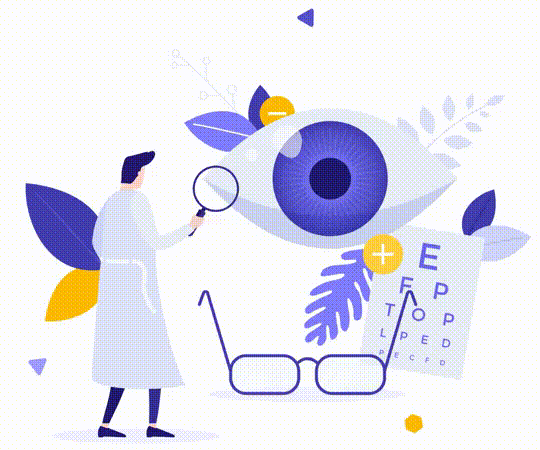Get the Best Eye Doctor for Your Kid
When should one consult a
Paediatric Ophthalmologist ?


Squinting
If your child squints or narrows their eyes to see, it may indicate nearsightedness or farsightedness.

Eye Rubbing
Eye strain, weariness, and pain can cause frequent eye rubbing. It may indicate allergies or other eye disorders.

Excessive Tearing
Watery eyes after sobbing may indicate a blocked tear duct or eye problem.

Red or Bloodshot Eyes
Eye redness might indicate inflammation, infection, allergies, or other eye disorders.

Misaligned or Crossed Eyes
If your child's eyes continuously cross inward or outward, it may suggest strabismus or another binocular vision disorder.

Blurry or Hazy Vision
Children may have blurry or hazy vision. Depending on the refractive defect, they may have nearor far-sightedness.

Light Sensitivity
If your child is unusually sensitive to light, squints in bright situations, or avoids well-lit areas, it may suggest an eye issue.

Headaches or Eye Pain
Eye strain or other vision difficulties can cause frequent headaches, especially following visual work.

Holding Objects Close
If your child frequently holds books, toys, or electronic devices close to their face or sits too close to the TV or computer screen.

Poor Hand-Eye Coordination
Trouble catching a ball or coloring inside the lines may suggest visual difficulties.


What is Strabismus/ Squint ?
- Esotropia: One eye moves inward toward the nose while the other remains aligned. It’s called “crossed eyes.”
- Exotropia: One eye turns outward away from the nose, while the other eye stays aligned. This strabismus is dubbed “wall-eyed.”
- Hypertropia and hypotropia: One eye turns up, while the other turns down. Strabismus with vertical misalignment.
Causes of Squint



How can Squints be treated?
Treatment options for strabismus or squints depend on the cause and severity of the condition of the patient. They may include:
Patching or Atropine Drops: If amblyopia is present, patching the stronger eye or using atropine eye drops to temporarily blur vision may help the weaker eye develop higher visual acuity.
Surgery: Eye muscle surgery may realign the eyes. The operation improves alignment by adjusting eye muscle tension.

Eyeglasses or Contact Lenses: Corrective lenses can enhance alignment and treat refractive strabismus.
Vision Therapy: Vision therapy exercises develop and enhance eye coordination. It helps strabismus kids.
Strabismus must be detected and treated early. A paediatric ophthalmologist or strabismus-specialised optometrist should evaluate and treat you or your kid if you suspect strabismus.
What can happens if Squint is not recognised early?

Nutrition and Eye Health for Kids
The importance of nutrition in maintaining and improving your child’s vision. Here are some key points to consider.
Important Nutrients for Healthy Vision
Vitamin A : Essential for good vision and helps protect the cornea. A deficiency can lead to night blindness.
Vitamin C : An antioxidant that helps protect the eyes from damage caused by free radicals.
Vitamin E : Another antioxidant that helps keep the cells of the eyes healthy.
Omega-3 Fatty Acids : Important for visual development and retinal function.
Zinc: Helps transport Vitamin A from the liver to the retina, making it essential for good night vision.
Lutein and Zeaxanthin : Found in high concentrations in the retina and help protect the eyes from harmful light.


Child-friendly foods to improve Eye health
Carrots and Sweet Potatoes: Rich in Vitamin A and beta-carotene, they are great for maintaining good vision.
Citrus Fruits and Berries: High in Vitamin C, which helps protect the eyes from damage.
Nuts and Seeds: Packed with Vitamin E, which supports eye health.
Leafy Greens: Spinach, kale, and other leafy greens contain lutein and zeaxanthin.
Eggs: Contain Vitamin A, lutein, and zinc, making them a great food for eye health.
How is Strabismus related to Poor Vision?
Eye misalignment can cause amblyopia in children. When the eyes are oriented in different directions, the brain receives two different visual images. The brain may ignore the image from the misaligned eye to avoid double vision, resulting in poor vision development of that eye. Also, an eye that sees poorly tends to be misaligned.





